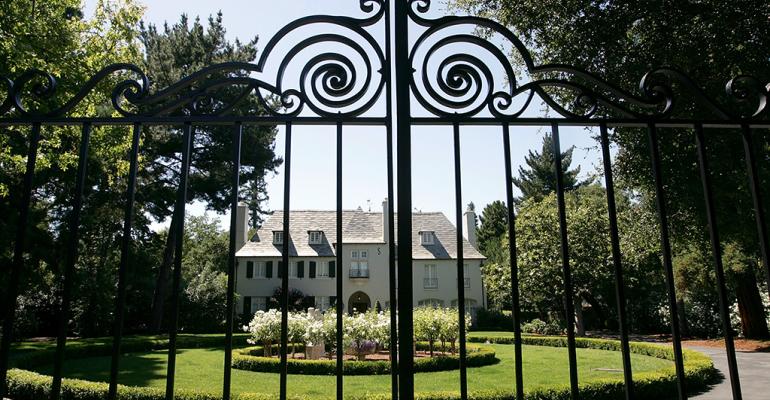A qualified personal residence trust (QPRT) is an irrevocable trust that allows a taxpayer to transfer a personal residence to the next generation for less than the full value of the residence by creating three distinct interests in the residence:
1. An income interest. The right to live in the house for a fixed term of years or until the grantor’s death, whichever comes first;
2. A reversion interest. The right to receive the house if the grantor fails to survive the fixed term of years; and
3. A remainder interest. The right to receive the house if the grantor survives the fixed term of years.
The grantor retains the income and reversion interests, so the only thing that the grantor gives away is the remainder interest, which is always worth less than the full value of the residence. The value of the remainder interest counts against the grantor’s lifetime gift/estate tax exemption — $5.49 million in 2017. The federal estate tax is currently 40 percent, so for taxpayers who are wealthy enough to trigger the estate tax, each $1,000 of exemption is worth $400 of tax savings. A lower remainder interest uses less exemption, which in turn results in a lower estate tax.
The values of these interests are based on three key factors:
1. Fixed term of years: The term of years must be written into the trust document and can’t be changed.
2. Grantor’s age when the QPRT is funded: The grantor’s age is calculated as of the date the grantor transfers the residence to the QPRT and then rounded to the nearest whole number.
3. Interest rate used to represent the time value of money: The interest rate (the Internal Revenue Code Section 7520 rate) is published monthly by the Internal Revenue Service, and the IRC Section 7520 rate in effect when the grantor funds the QPRT is the rate used for the calculations.
It’s important to note, however, that if the grantor dies before the term is up, the entire value of the residence will be included in his estate for tax purposes. So, effectively, the grantor is making a bet that he’ll outlive the fixed term of the QPRT in order to realize the attendant savings.
Example: Pat, age 60, owns a $1 million vacation home and wants to pass it down to his children. An outright gift of the home would use $1 million of Pat’s lifetime gift tax exemption. If Pat were to transfer the home to a 20-year QPRT in January 2017, however, he would use only $361,030 of his lifetime gift tax exemption (the value of the remainder interest). Compared to the outright gift approach, the QPRT will save Pat an additional $255,588 in estate tax. It’s interesting to note that this is the estate tax savings regardless of how much the home appreciates after the transfer is made because that savings would occur regardless of whether the home is gifted outright or through a QPRT.
Determining the Optimal Term
The only one of the three key variables that the grantor can control is the length of the fixed term of years, so that is where both the risk and reward in this technique lie.
As the term of a QPRT increases, the values of the retained interests (that is, the income and reversion interests) increase and the taxable gift produced by the QPRT declines. A longer term creates a more valuable income interest because the right to live in a house for 20 years is worth more than the value to live in that house for 10 years. A longer term also increases the value of the reversion interest because the grantor has a higher probability of dying during a 20-year term than during a 10-year term. The higher the value of the retained interests, the less gift/estate tax exemption the grantor uses, which in turn increases the estate tax savings that the grantor will realize — assuming he survives the term.
Drawbacks and Alternatives
Although a QPRT can be an effective way to pass a residence to the next generation at a heavily discounted value, the technique does present several drawbacks. Note that the following list isn’t exhaustive:
1. If the grantor fails to survive the term, even if only by a single day, the residence is included in the grantor’s estate at its date-of-death value. This “mortality risk” can be offset by purchasing a life insurance policy on the grantor’s life and holding that policy in an irrevocable life insurance trust, assuming that the grantor is insurable.
2. A QPRT is a poor choice for generation-skipping transfer (GST) tax planning because the grantor can’t allocate GST tax exemption to the QPRT until after the fixed term of years has expired. By that time, the value of the residence is likely to have increased, and the allocation of GST tax exemption would have to be made based on the fair market value of the residence at that time.
3. A mortgaged property is generally considered a poor choice for QPRT planning because a mortgage payment by the grantor may be treated as an additional gift to the remainder beneficiaries. This payment would use additional gift tax exemption and would necessitate the annual filing of a gift tax return.
4. If, as a result of future changes to the estate tax laws, the grantor doesn’t end up facing an estate tax and would have otherwise received a step-up in the tax basis of the residence at death, then the QPRT strategy will have increased the family’s overall tax burden rather than reduced it.
This is an adapted and abbreviated version of the author's original article in the April issue of Trusts & Estates.

